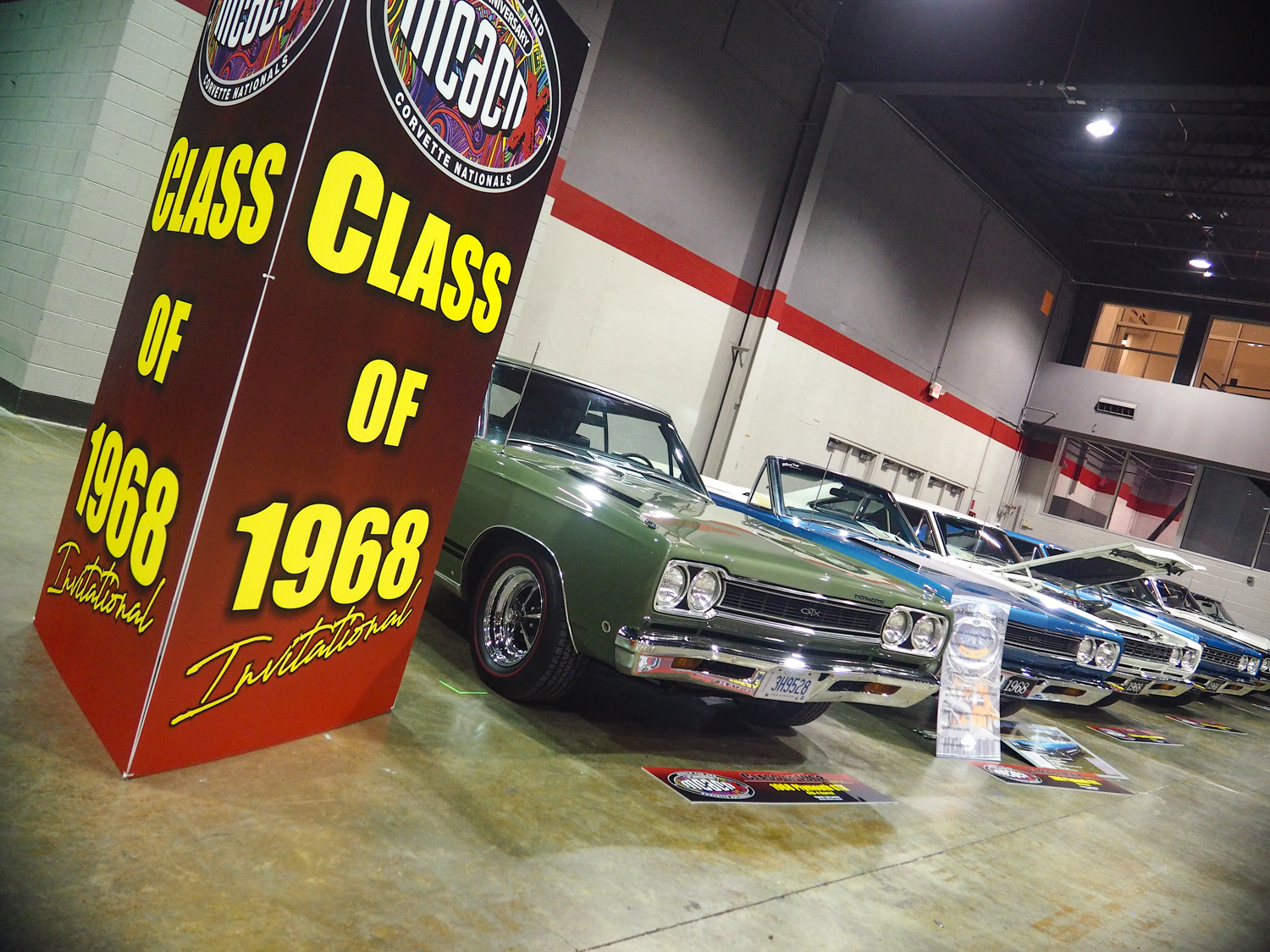The Class of 1968 was a flashpoint for Detroit (and America)
With the 50th anniversary of the 1968 model year, the Muscle Car and Corvette Nationals felt it was appropriate to hold a reunion of the performance cars that were produced for that model year. Indeed, Detroit had a killer year in 1968, as every manufacturer save American Motors had redesigned mid-size vehicles (AMC’s debuted the previous year). Plus, many performance variants achieved their all-time sales records.
But 1968 was perhaps the most tragic year in postwar American history. This was the year Martin Luther King, Jr. was assassinated, with disturbances breaking out in over 100 major cities, plus plenty of civil rights demonstrations, throughout the year. A few months later Robert Kennedy Jr. also was a victim of an assassination. In August, the Democratic National Convention in Chicago was marred by protests, mayhem, and police brutality. And the Vietnam conflict came to a head, with the Tet Offensive being a flashpoint of sorts, changing the tide of opinion in America (if not the world) against the war.
Here’s what the positive highlights looked like:
AMC
Due to its later introduction, the Javelin was able to improve on the things that the Mustang lacked, like a roomier trunk, more interior room for legs/head/hip, and better bumper protection, among other things. But it was the mid-year introduction of the AMX that really brought AMC’s image to a level where the Rambler stigma was finally shattered for good. Standard was a 290 cubic-inch 4-barrel-topped V-8, but a 343 and 390 with up to 315 horsepower were lovely alternatives.
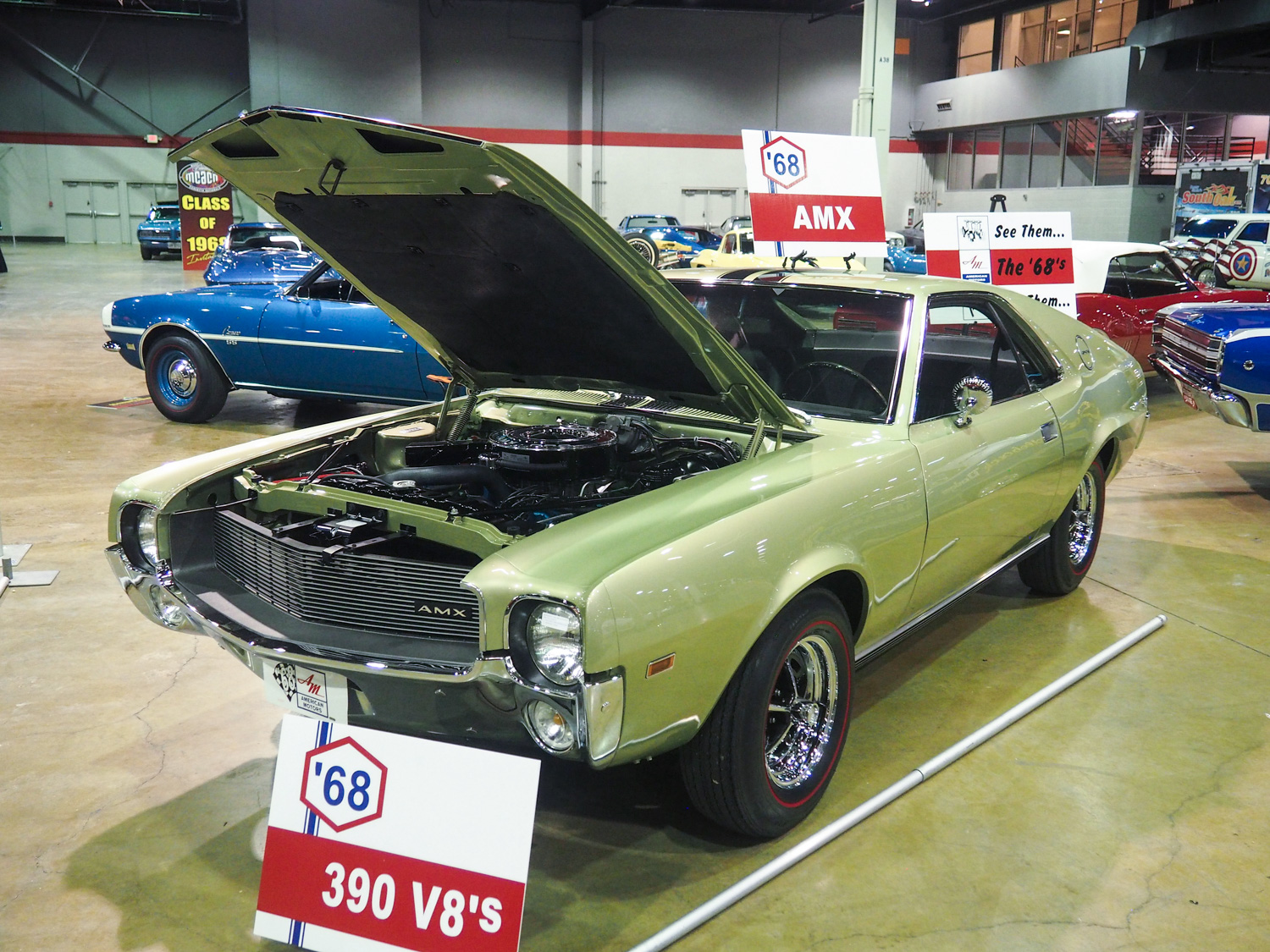
Buick
General Motors’ A-bodies were completely redesigned for 1968, and the Gran Sport nicely reflected its position as GM’s mature performance car. With styling somewhat like a junior LeSabre, the GS was available in three flavors: GS 350, GS 400, and the Special-based California GS. The 350 was an upgrade from the previous year’s 340, while the 400/340 was a carry-over in its second year. Dealers also offered Stage 1 equipment that bumped output 10 horsepower. Buick sold 26,345 Gran Sports, an all-time high.
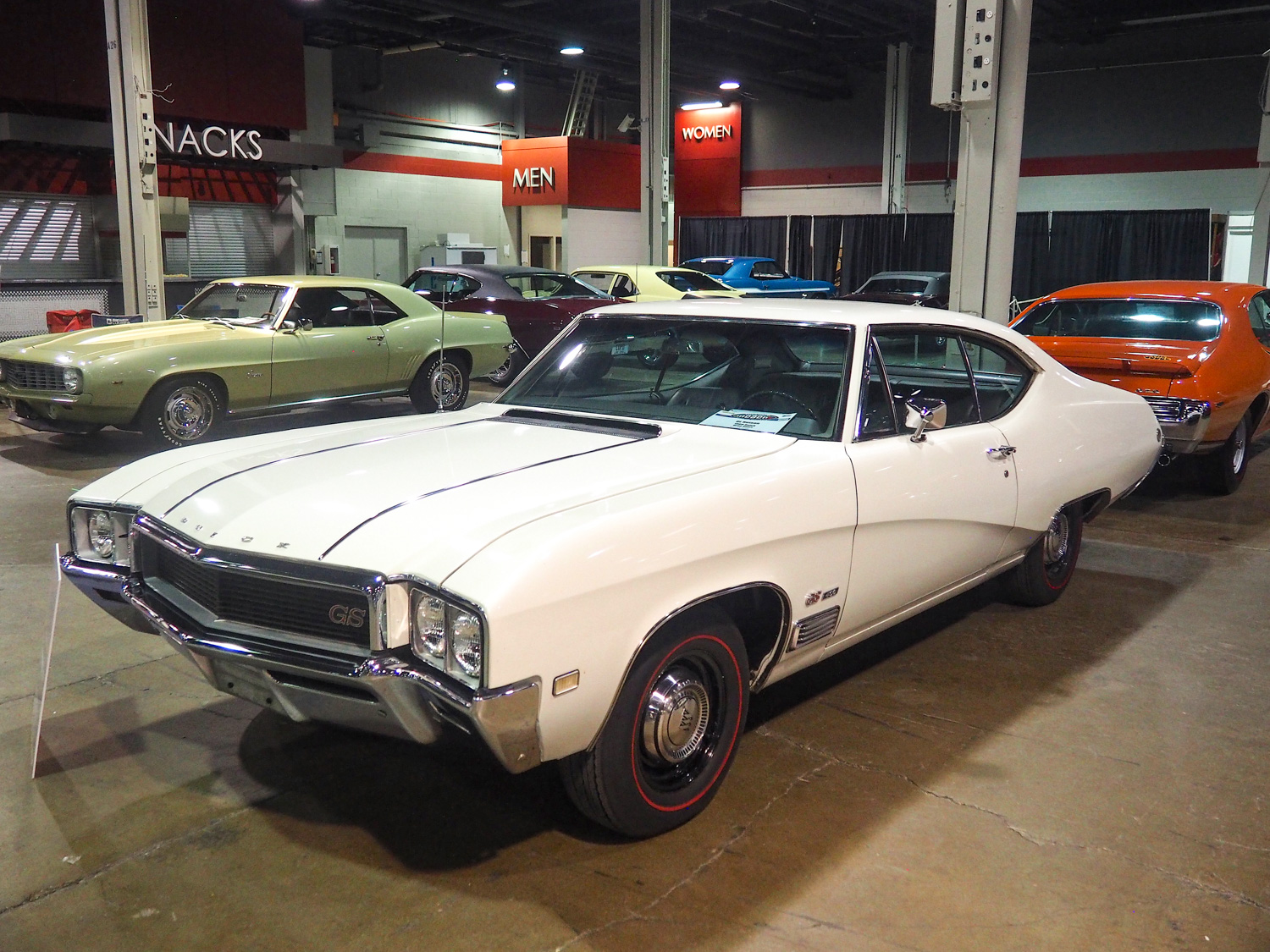
Chevrolet
Like the GS, the Chevelle SS 396 featured an all-new body with carry-over engines in 325-, 350-, and 375-hp variants, plus the new option of L89 aluminum heads. The Pontiac GTO continued to be a thorn in its side but the following year the SS 396 would finally beat the GTO at its own game.

General Motors was still playing politics with its cubic-inch limit, so if a 396 mid-size was not enough, you could move up to a full-size Bow Tie with the 427. The SS 427 package was in its second year, continuing to feature a standard 385-horsepower L36 or, returning after a year-long respite, the 425-horsepower L72. New identifying features included a domed hood, front fender louvers, and SS 427 badges. In addition to the Impala sport coupe and convertible, the SS 427 package was available on the new, formal-roofed Impala Custom coupe.
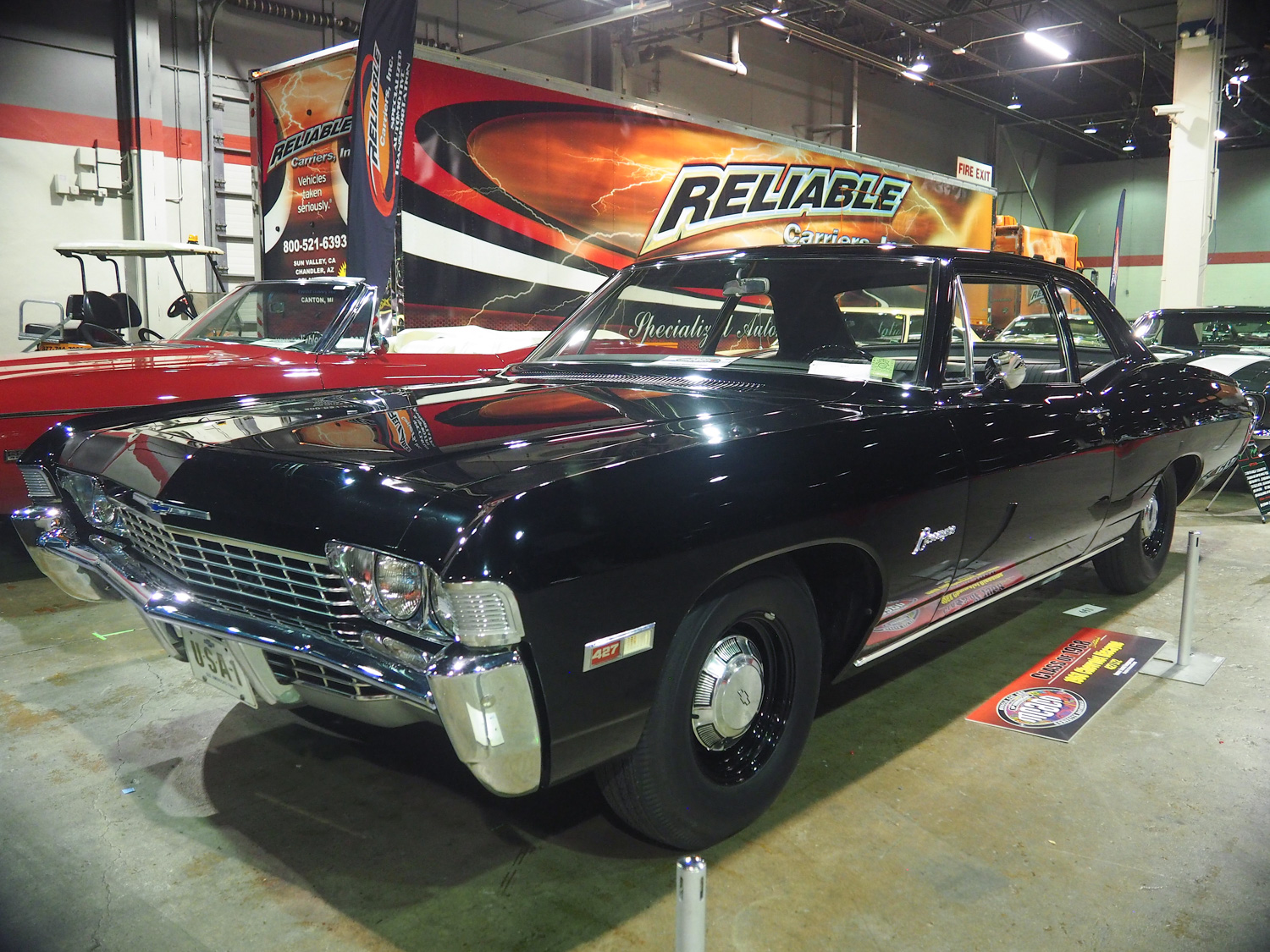
Those interested in going as fast as possible ordered the L72 in the Biscayne or Bel Air two-door sedan, of which 219 were built according to the GM Heritage Center.

The Chevy II/Nova was all-new for 1968, using a front sub-frame (similar to the Camaro’s) to allow for big-blocks. The Super Sport became a de facto performance model, unlike before, with a standard 295-horsepower 350 (borrowed from the Camaro SS) and optional 350- or 375-horse 396s. The latter was only available with a stick, but 50 Central Office Production Order cars were built with a special heavy-duty TH400 automatic that would become a regular production offering the following year. Chevrolet racer and businessman Dick Harrell also had his hand in the creation of a handful of 427 Super Sports for sale through a select group of dealerships.
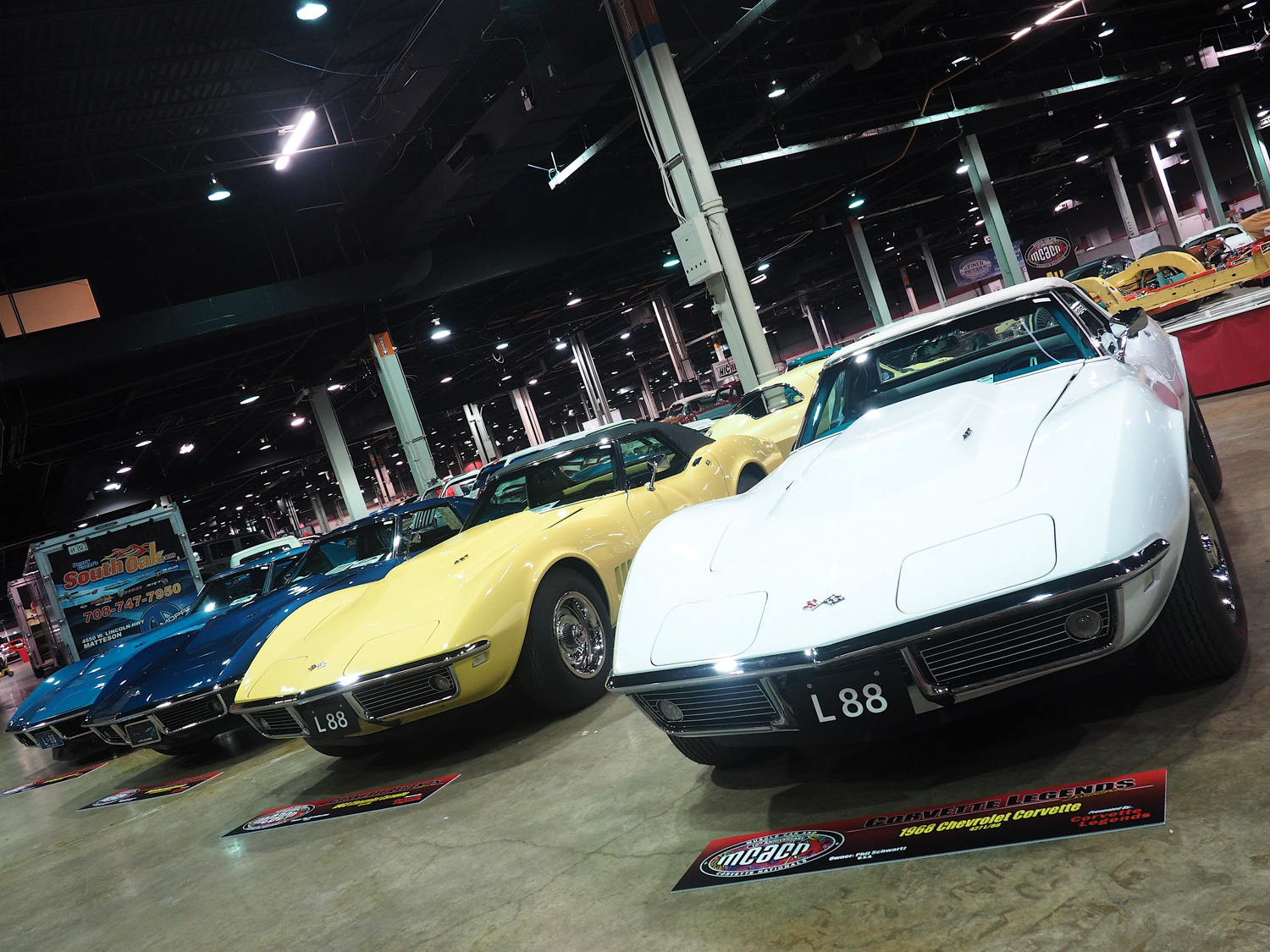
The new Corvette was perhaps the wildest vehicle in the American market. Engines were repeats from 1967, including the race-bred L88 with an underrated 430 horsepower. It was way too much car for most people, but 80 customers felt it was the car for them, up from 20 from the year before.
But the image leader in the Chevrolet roster was the Camaro, now in its second year. With a new grille and several other detail tweaks, there was still a lot to like besides its pony car style. There was a new performance engine (L34 396/350), L89 aluminum heads for the L78, and the Z/28 picked up in popularity.
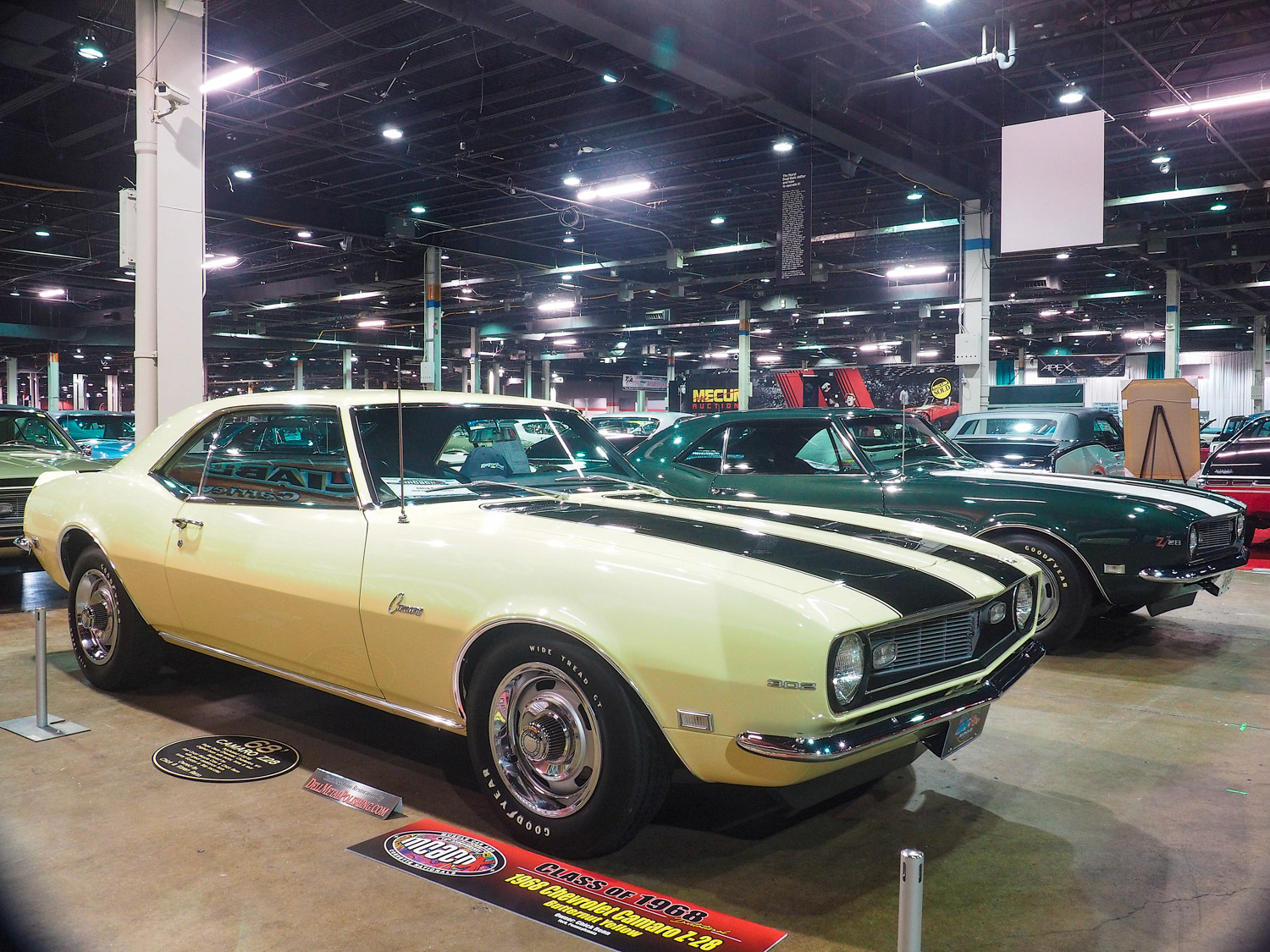
Motion Performance, in conjunction with Baldwin Chevrolet, helped enthusiasts buy what Chevrolet would not. Dropping in a 427 in a Camaro was a cakewalk, but actually driving one with an L88 required extra attention.
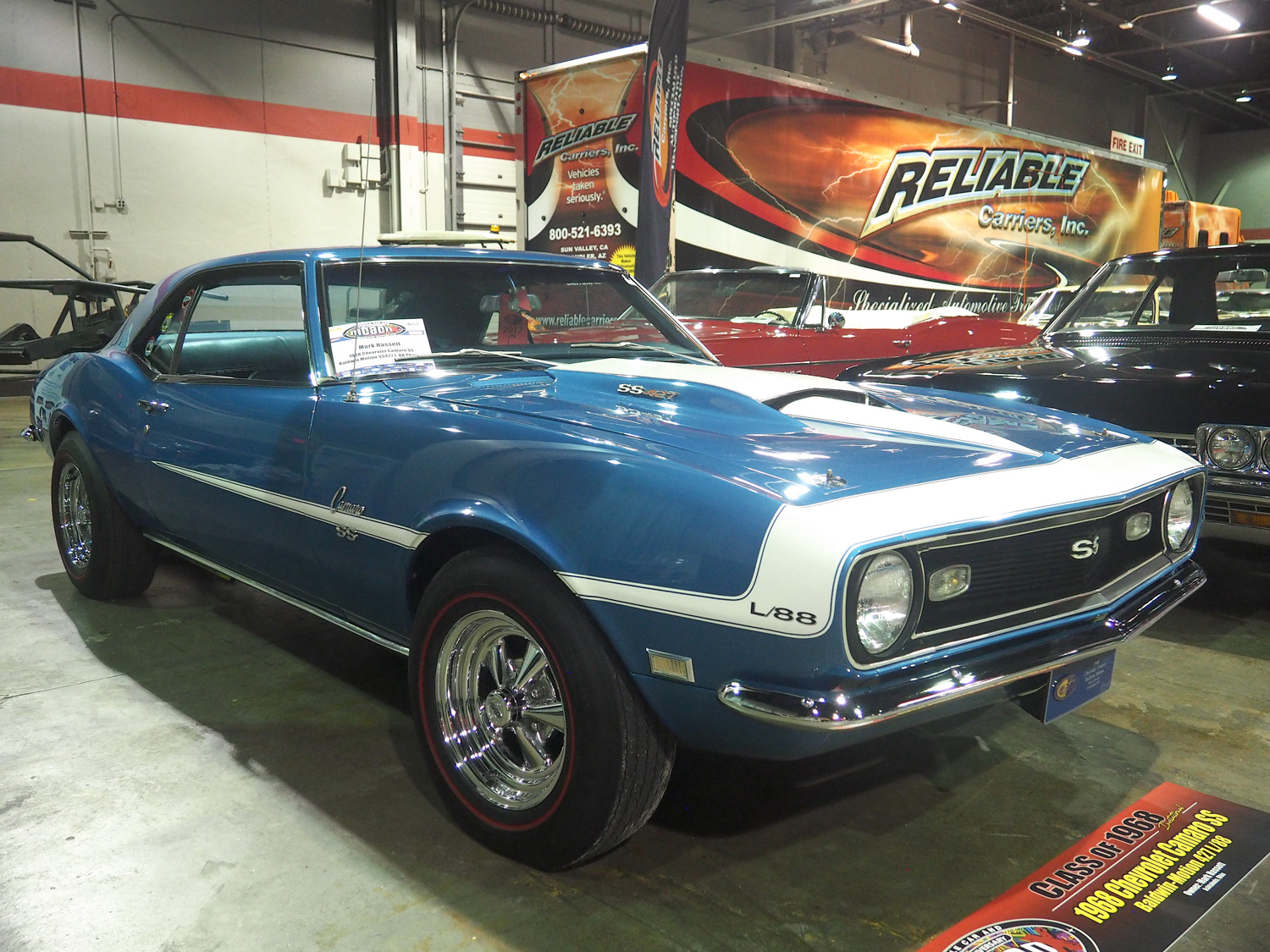
Dodge
Dodge’s performance lineup was now grouped as the Scat Pack, with twin bumblebee stripes on the trunk lid. The elder statesman of the bunch was the Coronet R/T hardtop and convertible, returning with all-new styling and standard 440 Magnum with 375 horsepower. For those who didn’t want to find themselves in a pickle in a race, the 426 Hemi was available. The Coronet R/T was joined by the cheaper Super Bee coupe in January, which featured a standard 335-horsepower 383 or an optional Hemi.

But the big news at Dodge was the redesigned Charger, which went from a personal-luxury-esque fastback to a hunky coupe. A new R/T variant was equipped like the Coronet R/T with standard 440 and optional Hemi. Even the Slant Six was available in a Charger.
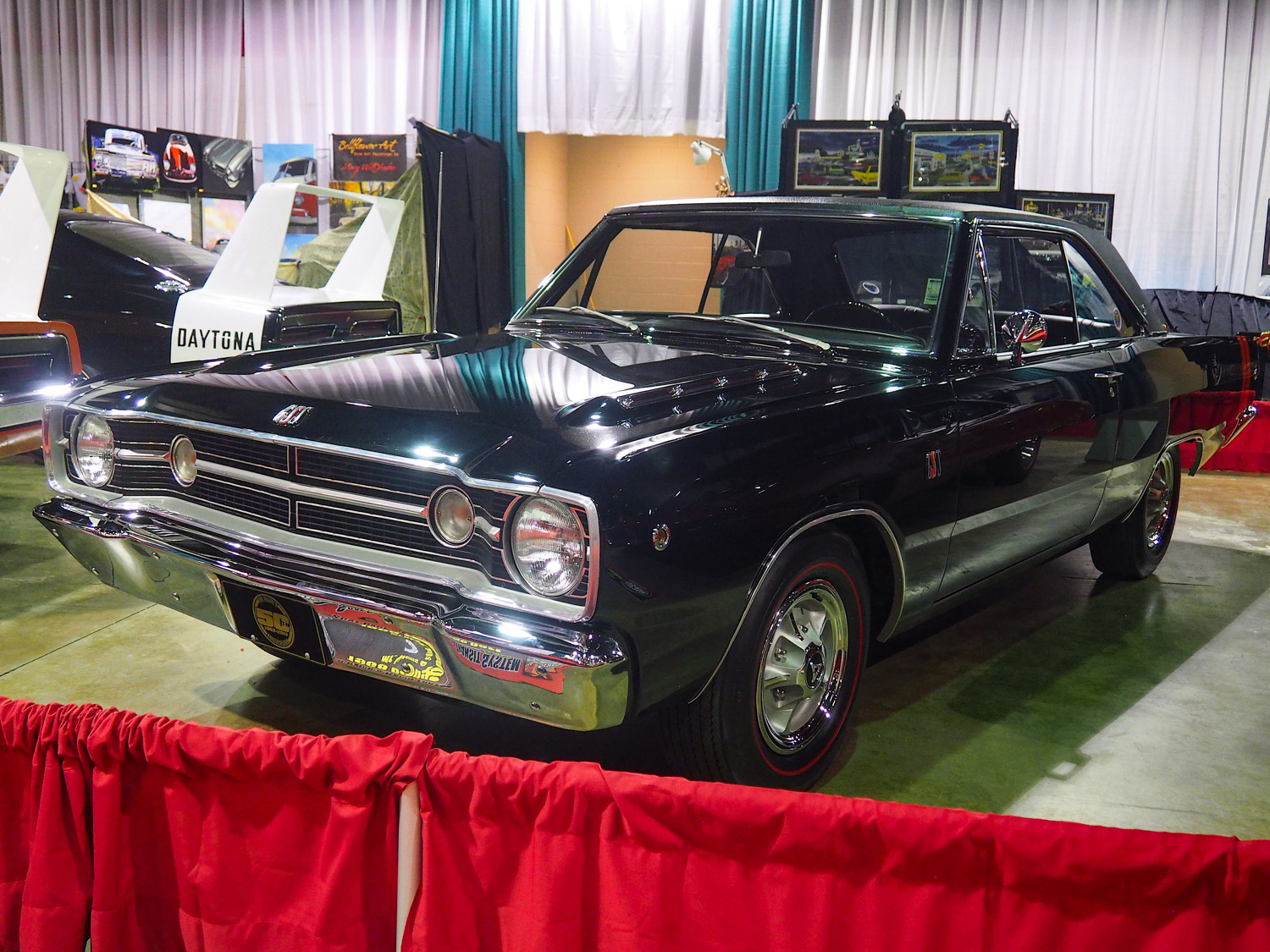
The compact Dart got in on the act as the junior member of the Scat Pack. Performance engines were available before, but for the first time the Dart had its own dedicated performance model called GTS (initially a 383-powered GT sub-model from the previous year). Standard was the all-new 340 small-block with 275-horsepower, which developed a reputation besting more substantial vehicles; optional was a 300-horse 383. A handful of 440-powered GTSs were available from Grand Spaulding Dodge in Chicago.
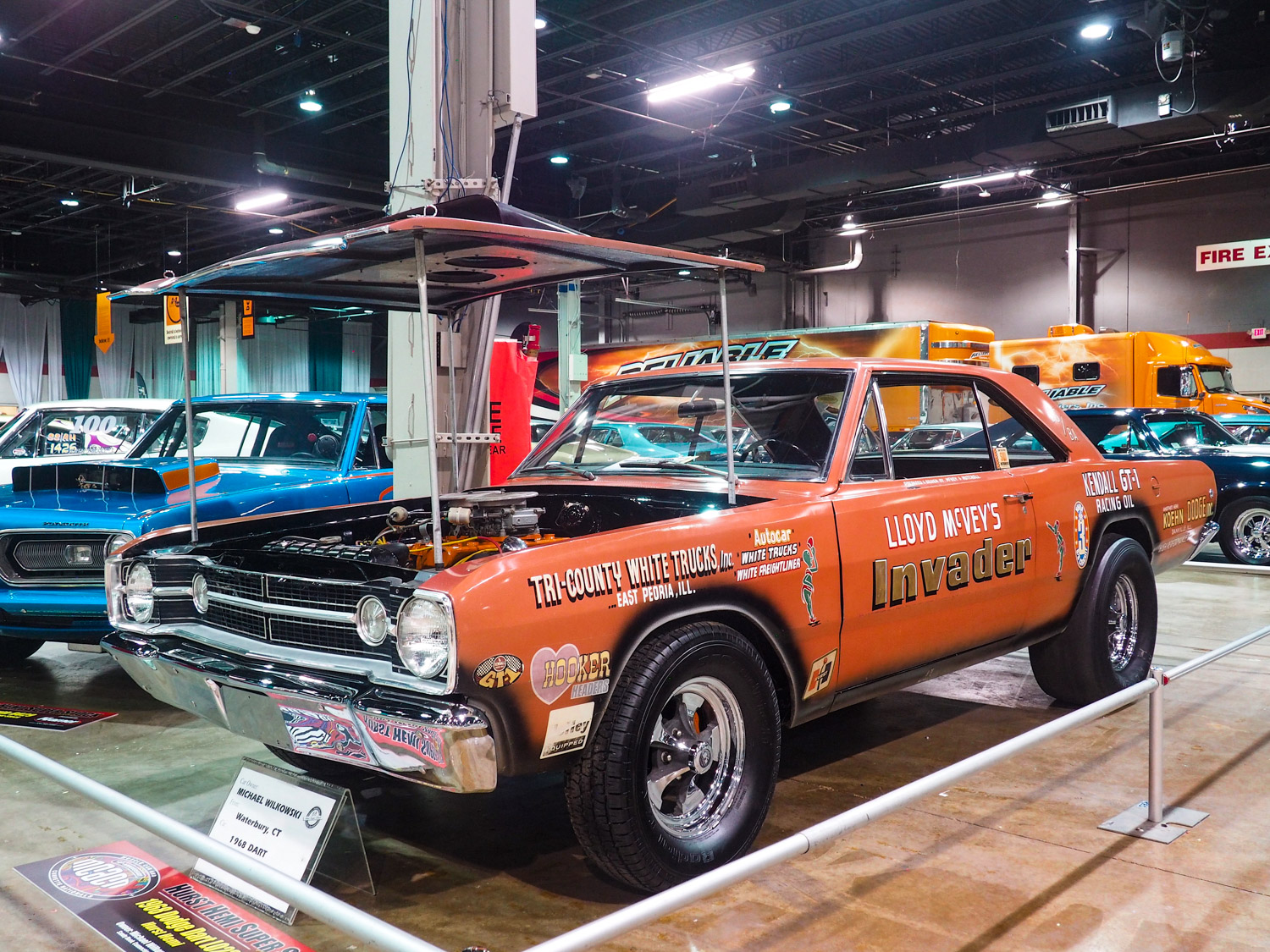
Ford
The Mustang was king in the market, with the original selling over a million within 18 months of its debut. By 1968, the market featured several competitors, but the Mustang was still the sales leader by a significant margin. Ford had promised a 427 Mustang but it never came to fruition, and the 390 wasn’t cutting it on the street scene. With the April debut of the 428 Cobra Jet, Ford’s big-block problem was solved.
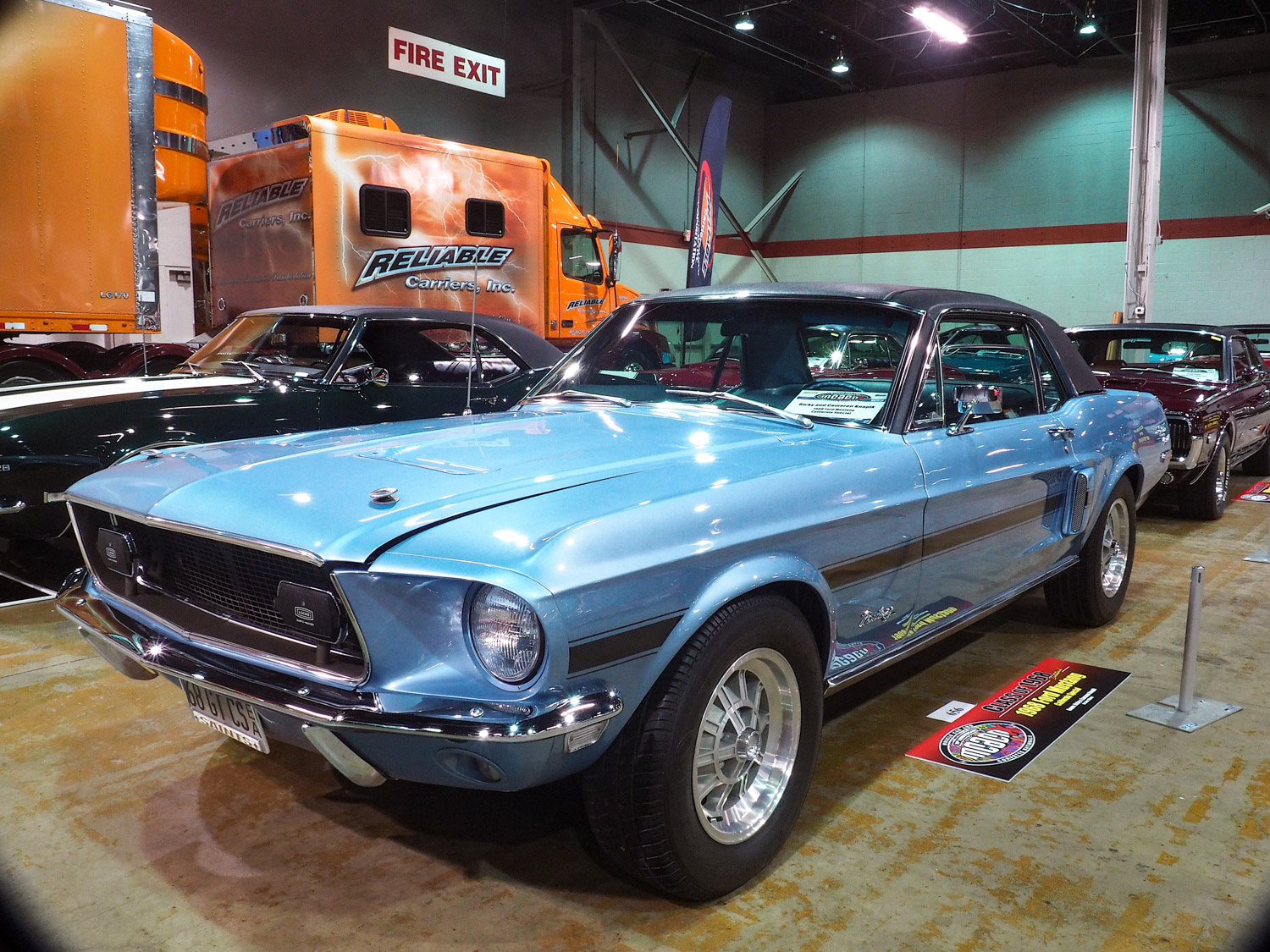
Like the Mustang, the Shelby GT350 and GT500 featured similar refinements for 1968, plus the addition of a convertible. The GT350’s Hi-Po 289 was replaced with a 230-horsepower 302, and the GT500’s 428 Police Interceptor received a horsepower bump to 360 but induction was reduced to a single four-barrel. In April, the Police Interceptor was replaced by the Cobra Jet and the new model was christened GT500KR.
The Fairlane was completely redesigned for 1968 with the Torino GT replacing the former Fairlane GT. Along with the coupe and convertible was a new, racy fastback. Like the Mustang, Ford had promised the 427 but it never came; the mid-year introduction of the 428 CJ finally helped make Torinos competitive.
Mercury
The Cougar’s debut in 1967 proved that the market could tolerate a premium pony car. There were only detail changes for 1968 but, like the Mustang, the 325-horsepower 390 was as good as it got. However, the introduction of the limited-edition GT-E featured the 427 that Ford had promised but never delivered in the Mustang; the GT-E was the only recipient of the storied FE. The 390-horse Cougar was only available with an automatic until the 428 Cobra Jet was introduced as its replacement. The Cobra Jet was also available for regular Cougars.

The Cyclone, like the Torino GT, was completely redesigned for 1968. The Cyclone also featured a new fastback body style, but the convertible was discontinued. Both fastback and coupe were available as Cyclone and Cyclone GT, with the top engine being the 390 until the 428 CJ replaced the 427 that was never built.
Oldsmobile
Oldsmobile’s redesigned A-body series showed a slight Toronado influence with its profile. The 4-4-2 still had 400 cubic inches but featured a new long-stroke design that, in retrospect, was not an improvement over the 1965-67 400. Standard horsepower was at 350, with an automatic downgrading it to 325. The W30 produced 360 horses like before, but now the Outside Air Induction (OAI) scoops were placed under the bumpers. New for the 4-4-2 was the Turnpike Cruiser package, which included a 290-horse 400 with 2bbl. Production for 1968 achieved a record of 33,607 4-4-2s.
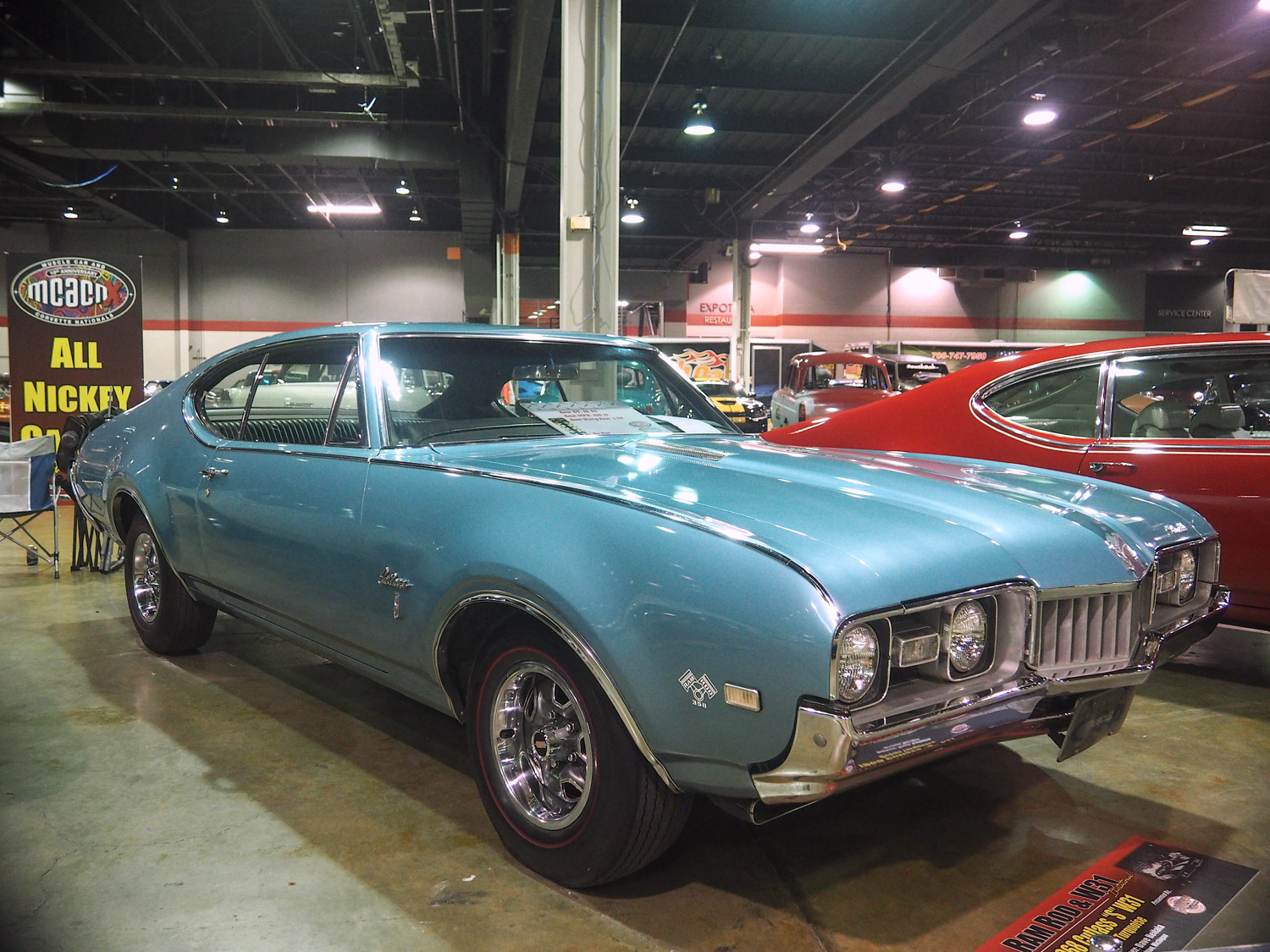
New for Oldsmobile performance enthusiasts was the Ram Rod 350 (RPO code W31), which came full of hi-po goodies like 308-degree duration cam (due to the lack of vacuum, power brakes were not allowed) with .474-inch lift, special 2-inch intake/158-inch exhaust valves, and other heavy-duty components plus Outside Air Induction. On paper, it was rated at 325 horsepower.
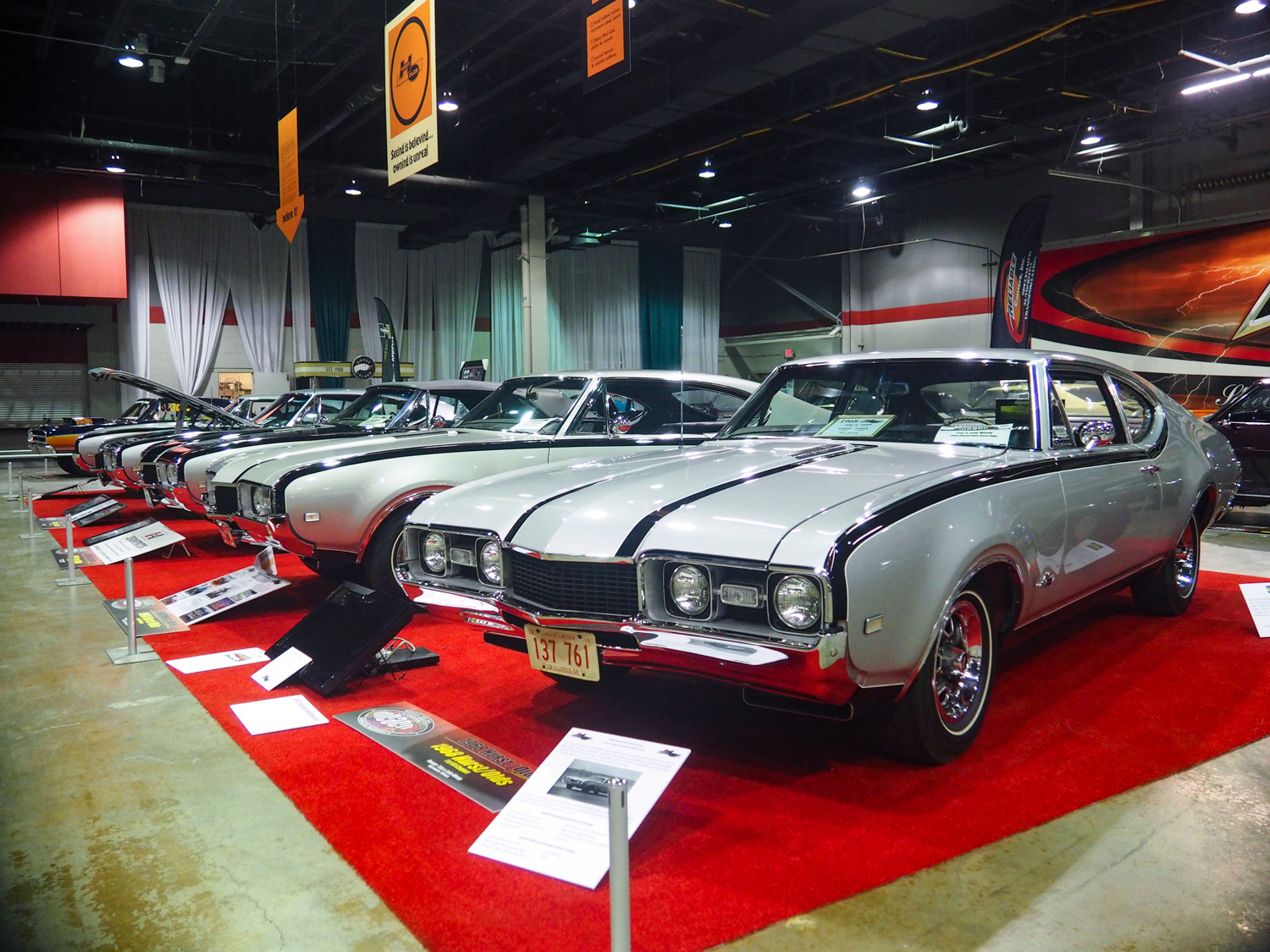
The Toronado also received the “W treatment,” with a 400-horsepower 455, but GM politics kept it from the 4-4-2. Hurst helped solve this issue with the Hurst/Olds, contracting with Lansing’s Demmer Engineering to produce the black and silver Hurst/Olds. All 515 cars received a 390-horse 455 (in actuality more powerful than the Toronado’s) and OAI. All but one featured the TH400 automatic with Hurst Dual/Gate.
Plymouth
Like Dodge, Plymouth’s B-body series had been redesigned. The GTX featured much of the same standard equipment as before (including 440 Super Commando and non-functional hood scoops), but now stripes were standard, featuring dual strips between the front and rear wheels. All mechanical items were equivalent to the Coronet R/T’s. The GTX would never see sales as good as 1968’s, with 18,940 hardtops and convertibles.
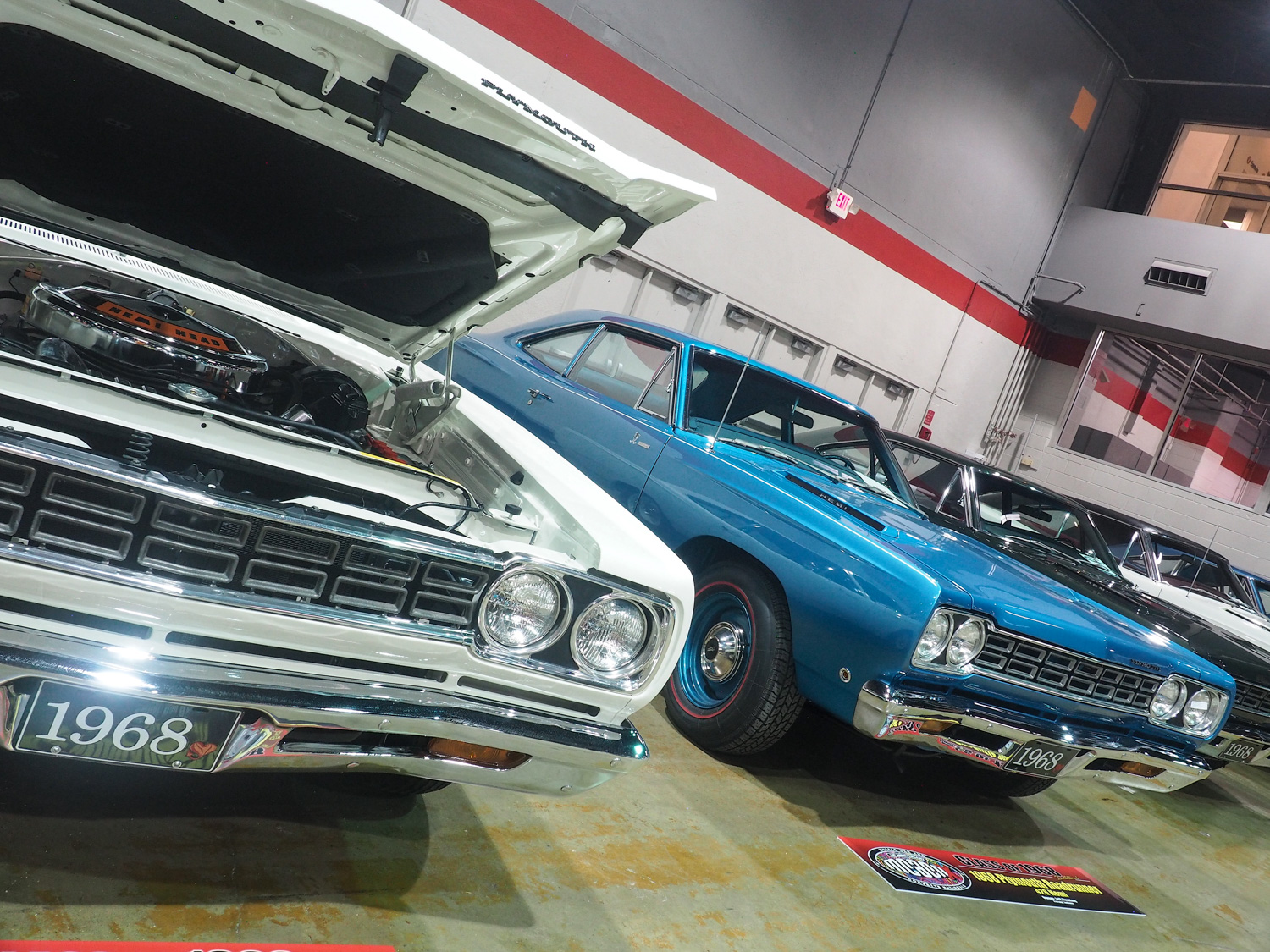
But the big news at Plymouth was the Road Runner, stuffed with a special 335-horsepower 383, standard 4-speed, and little else. With a base price under $2900, it was a performance bargain and, as Plymouth would soon discover, truly satisfied a niche for a no-frills performance car. The following year, it would outsell the Pontiac GTO.
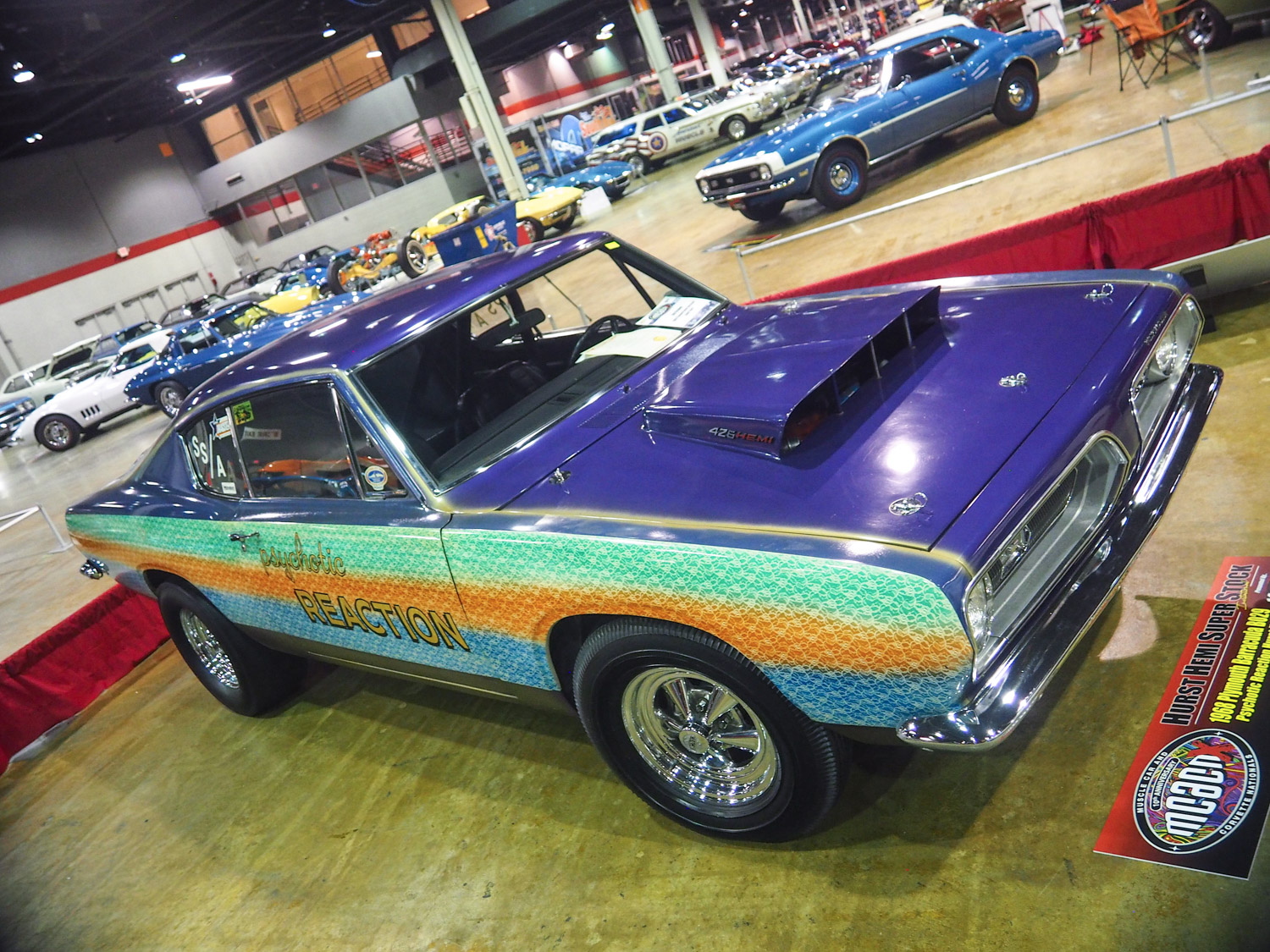
The Barracuda was in the second year of its second generation. The Formula S continued to be the performance model, still available with a 383 (now upped to 300 horsepower), but the 340 small-block was introduced as its standard engine, superseding the 273 that had been standard the year before. And, like the Dart, 70 S/S Hemi Barracudas were built with the assistance of Hurst.
Pontiac
Number three in the market, Pontiac produced the number one muscle car, but it didn’t stay that way for long. The GTO was redesigned like its crosstown cousins, but the GTO stood out with its special Endura nose, which created a monochromatic look. Engines were carryovers from 1967, but the Ram Air engine was replaced by the round-port, 366-horsepower Ram Air II mid-year.
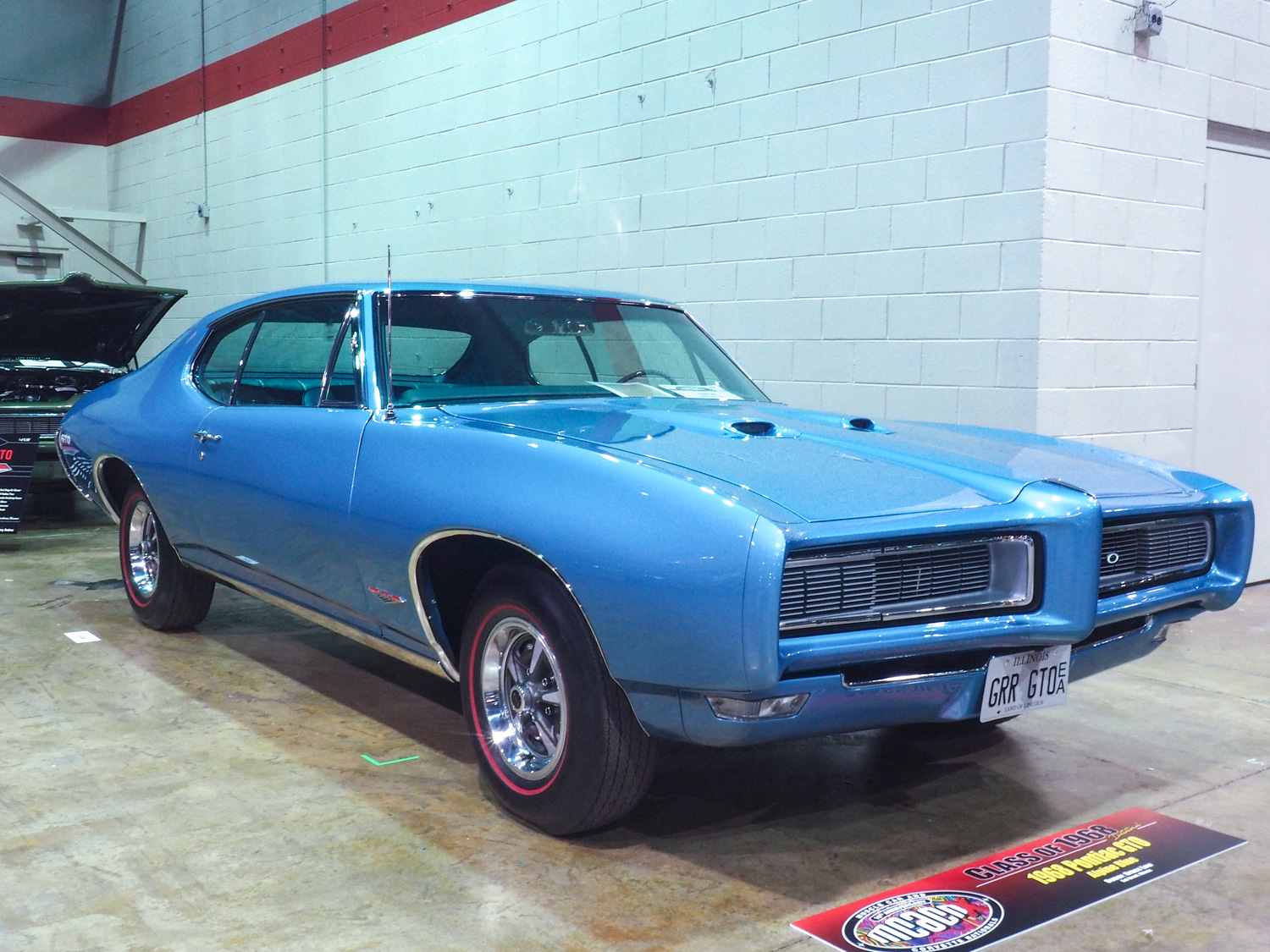
The Firebird received detail changes for 1968, but under the hood there were several additions: the OHC 6 was bumped up 20 cubic inches to 250, and the standard V-8 and Firebird HO featured an additional 24 cubic inches to 350. For the Firebird 400, the 335-horsepower 400 HO was added and, like the GTO, the Ram Air II replaced the Ram Air engine, although it was rated at 340 horses in the Firebird.

